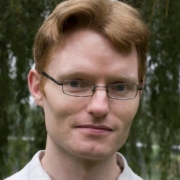
Roger Colbeck
Kings College London
Theme Leader

Mina Doosti
University of Edinburgh
Theme Co-Leader
Hub teams are developing next-generation quantum communication and cryptography protocols and technologies that make quantum systems more secure, scalable, and practical. Work spans different areas:
(1) device-independent quantum cryptography, which enables secure communication without needing to trust the hardware used;
(2) secure authentication: a systematic framework for cryptographic authentication tailored to quantum networks, helping identify and deploy the right tools this important task in quantum networks, and
(3) semiconductor-based sources of entangled photons, capable of producing identical quantum particles on demand for communication and computing applications
(4) advanced quantum protocols: new generation of advanced protocols such as secure delegated and distributed quantum schemes tailored for quantum networks.
Together, these efforts aim to create a foundation for reliable, secure, and commercially viable quantum networks.
Current quantum technologies face several obstacles to large-scale deployment. Certifying that real-world devices are secure is both costly and technically challenging, and any hidden vulnerability could undermine an entire system. Similarly, the authentication requirements for quantum networks remain unclear, creating uncertainty for industry adoption. On the hardware side, generating high-quality entangled photons, a key resource for quantum communication, is difficult, as imperfections in quantum devices can lead to mismatched photons that break quantum interference. Addressing these challenges is essential to make quantum communication trustworthy, efficient, and ready for real-world use, which is what we do in this work package.
The research team’s approach combines innovation across theory, software, and hardware. In device-independent cryptography, the team is using the unique correlations arising from quantum entanglement to certify security directly from experimental data, eliminating the need for expensive device testing and removing the risk of hidden design flaws.
In authentication, the team is building on cryptographic frameworks that allows for secure composition and standardises the exact cryptographic requirements for different types of quantum communication, offering a “plug-and-play” toolkit for secure deployment.
On the hardware side, the team is developing techniques to make the photon-entangling process insensitive to imperfections in quantum dots, enabling efficient, on-demand entanglement generation. These innovations will deliver more robust and cost-effective quantum communication infrastructure, supporting commercial applications in secure networking, data protection, and future quantum computing platforms.

Myrto Arapinis
University of Edinburgh

Erika Andersson
University of Edinburgh

Christopher Chunnilall
NPL

Elham Kashefi
University of Edinburgh

Pieter Kok
University of Sheffield

Stefano Pirandola
University of York

Ciara Rafferty
Queen’s University Belfast
